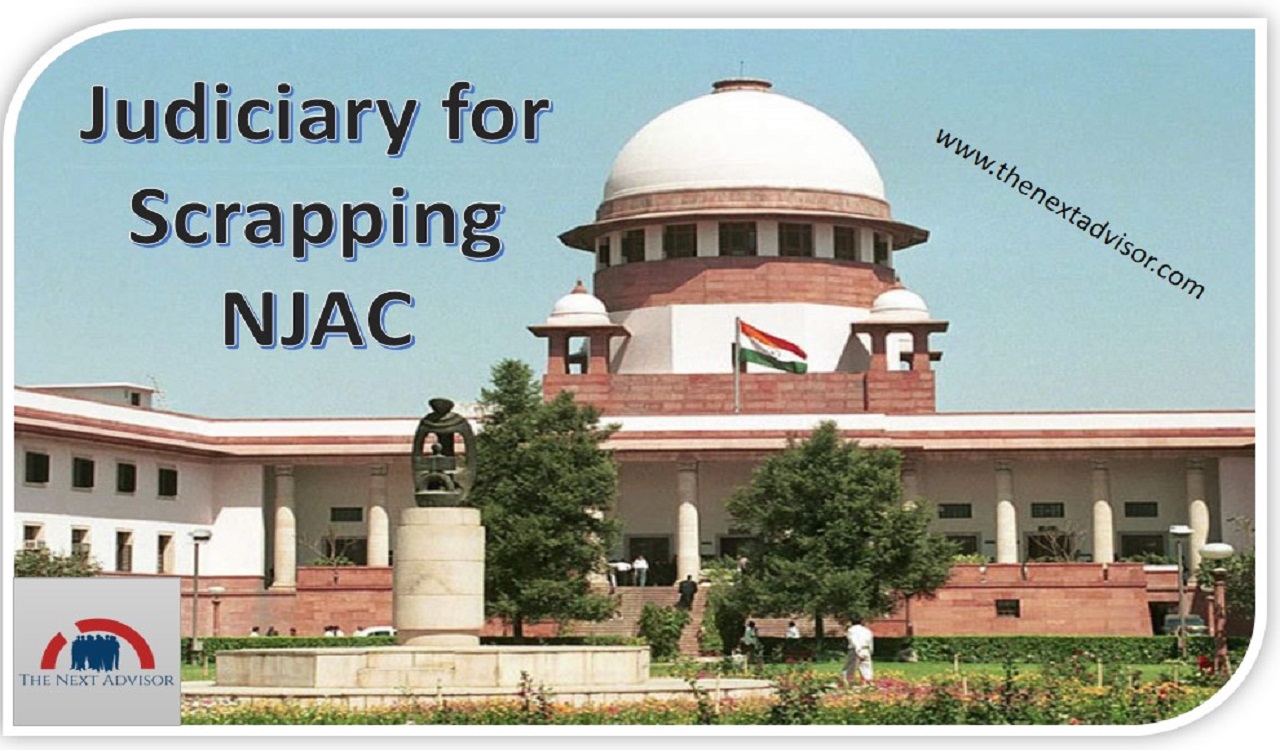Judiciary for Scrapping NJAC
Let’s see about the Judiciary for Scrapping NJAC.
Government Vs Judiciary:
Is the vice President’s maiden Rajya Sabha speaker of days to come?
The speech marks a clear step in the government and the Judiciary over the appointment of judges.
The news –
Laxman Rekha Must be respected:
Dhankhar lams Judiciary for scraping bill. Rajya Sabha Chairman Jagdeep Dhankhar said the legislative judiciary and the executive should respect the ” Lakshman Rekha”.
Appointment of Judges –
Article 124 in the constitution of India 1949. 124, Establishment and constitution of Supreme court.
1. There shall be a Supreme Court of India constituting a Chief Justice of India and parliament by law prescribes a larger number, of not more than seven other judges.
2. Every judge of the Supreme Court shall be appointed by the president by warrant and seal after consultation with such of the judges of the Supreme Court and the state as the president may deem necessary for the purpose and shall hold office until the age of sixty-five years. Provided that in the case of appointment of a judge other than Justice, the Chief Justice of India shall always be consulted.
Article 217 in The constitution of India 1949 –
217, Appointment and conditions of the office of a judge of a High court.
1. Every Judge of the High Court shall be appointed by me president by warrant under his hand seal after consultation with the Chief Justice of India, the governor of the state, and in the case appointment of a Judge other than the chief justice, the Chief Justice of the High Court, and shall hold office, in the case of a provided in Article 224, and in any case, until the attains the age of sixty years.
(a) A Judge may, by writing under his hand.
(b) A judge may be removed from his office by the president of Article 124 for the removal of a Judge of the Supreme Court.
Criteria –
There is no minimum age fixed for high court judges or Supreme Court Judges but the maximum age is 62 and 65 respectively.
SC judge –
(1) He/She must be a citizen of India.
(2) Has been for at least 5 years a Judge of a High Court or two more such courts in succession.
(3) Has been for at least 10 years an advocate of a High Court or two or more such courts in succession.
HC Judge –
(1) He/She should be a citizen of India.
(2) Has a judicial office in the territory of India for 10 years or more.
Appointment of Judges –
Original position, Under Articles 124 and 217, the Supreme court and High Court move to be appointed by the president in consultation with the CJI.
First Judges case 1981 –
SP Gupta. Supreme court ruled that the constitutions made by CJI to the president can be for ” Cogent Reason”.
Second Judge case 1993 –
SC V. UOI – The Supreme suggested the condition of appointment judges. The collegium shall consist of judges.
Third Judges case 1998 –
Re. SC advocate on record V. UOI – Supreme court formalized the collegium system and gives guidelines for the appointment and transfer of SC/HC judges.
SC Guidelines –
(1) The term ” Consultation” with the Chief Justice of India in Articles 124, 217, and 222 requires consultation with a plurality.
(2) The CJI can only make a recommendation to appoint the supreme court and to transfer a Chief Justice or a High Court in consultation with the 4 senior-most Judges.
SC Guidelines –
Judges’ rule must be followed generally, however, if departed ” Positive recommendation” has to be recorded in writing. The Judges consulted should be in writing and should be conveyed to India by the CJI. CJI without consultation is not binding upon the CJI is not entitled to act solely in his capacity.
NJAC 2015 –
The GOI brought the NJAC through the 99th constitution amendment act 2014. NJAC would consist of the following six persons –
Chief Justice of India.
Two other senior judges of the Supreme court next justice of India.
The Union Minister of law and Justice.
Two eminent persons.
Fourth Judges case –
NJAC case – Court advocates on record union of India 2015, the apex court NJAC as unconstitutional.
The News – On the first day of the winter session of parliament, vice Jagdeep Dhankar, in his maiden speech as the chairmen of Sabha, took on the judiciary, in a scathing speech constitutional division of power between the three governments and the legislature. the executive and the judge. The vice president criticized the Supreme court for NjAc and the 99th constitutional amendment that had ” Unprecedented support: in the parliament and state.
Public posturing on collegium not well taken: Supreme court to government. collegium system is the law of the best to be followed:
Supreme court tells central to advise govt. of the legal position. Collegium deliberations were not submitted only the final resolution was put in.
What to do? Collegium system not working properly.
Issues with collegium –
(1) Judicial innovation.
(2) Extra constitutional body.
(3) Judges appointing judges.
(4) Opacity of collegium proceedings.
(5) Nepotism over Talent. Resolve the issues that the apex court had with the NJAC and being a new bill.
Veto or casting votes to eminent persons?
International experience –
(1) USA: President nominates the senate and approves through the senate judicial committee.
(2) UK: Judicial appointment commission consisting of 15.
(3) South Africa: Judicial services commission with 23 members.
(4) France: Government nominates a High council of judiciary approves.
(5) Italy: 15 judges 5 selected by the president, 5 selected by the parliament in a joint session, and 5 selected by courts.
So this was all about the Judiciary for Scrapping NJAC



























